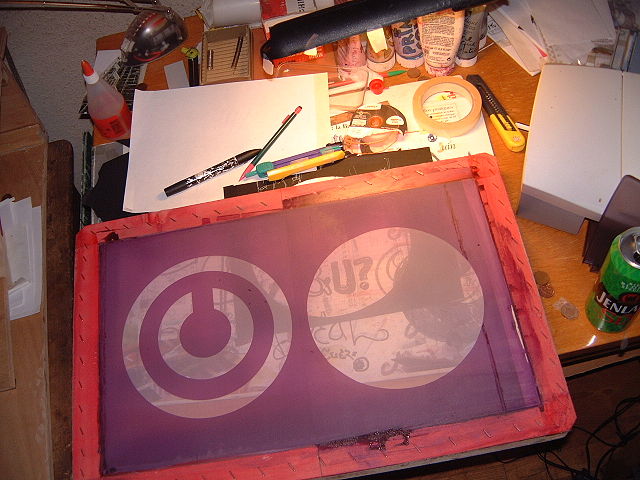Screen printing is a printing technique where a mesh is used to transfer ink onto a substrate, except in areas made impermeable to the ink by a blocking stencil. A blade or squeegee is moved across the screen to fill the open mesh apertures with ink, and a reverse stroke then causes the screen to touch the substrate momentarily along a line of contact. This causes the ink to wet the substrate and be pulled out of the mesh apertures as the screen springs back after the blade has passed. One colour is printed at a time, so several screens can be used to produce a multi-coloured image or design.
A silk screen design
Screen printers use a silkscreen, a squeegee, and hinge clamps to screen print their designs. The ink is forced through the mesh using the rubber squeegee, the hinge clamps keep the screen in place for easy registration.
A macro photo of a screen print with a photographically produced stencil. The ink will be printed where the stencil does not cover the substrate.
Screen with exposed image ready to be printed
Stencilling produces an image or pattern on a surface by applying pigment to a surface through an intermediate object, with designed holes in the intermediate object. The holes allow the pigment to reach only some parts of the surface creating the design. The stencil is both the resulting image or pattern and the intermediate object; the context in which stencil is used makes clear which meaning is intended. In practice, the (object) stencil is usually a thin sheet of material, such as paper, plastic, wood or metal, with letters or a design cut from it, used to produce the letters or design on an underlying surface by applying pigment through the cut-out holes in the material.
Stenciled warning sign in Singapore
Stencilled Gaelic type
Japanese Ise-katagami stencil for printing textiles
Prehistoric hand stencils, Cueva de las Manos in Argentina








